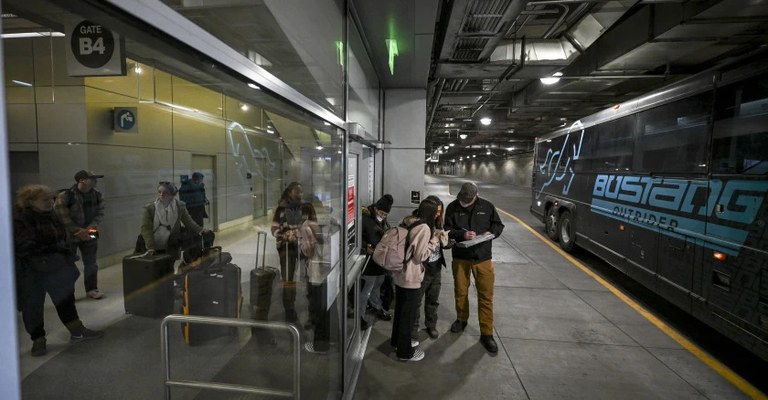How Colorado built a bustling intercity bus service (Governing)
Shift into Safe News
Bustang pulls out of Denver Union Station dozens of times a day. It carries riders up and down Interstate 25 on the Front Range corridor, where most of the state’s population lives, and heads across the Rocky Mountains to the rural Western Slope and the cities of Vail, Avon and Grand Junction.
The network was designed for two purposes: to provide links to critical services for rural residents, and to allow alternatives to driving in one of the most congested parts of the country. On some parts of the I-25 journey, Bustang operates in the HOV lanes, flying past backed-up traffic, says Danny Katz, director of CoPIRG, a progressive group that backs transit investment. In other sections it plods along with the rest of the cars. But even in those scenarios, says Katz, who recently completed a tour of state transit services, “I had a bathroom and Wi-Fi, so I was much more comfortable.”
A few decades ago, intercity bus services like these were run by private operators like Greyhound. But those offerings have been contracting for years. In 2015, the Colorado Department of Transportation (CDOT) launched Bustang, its own intercity bus service, funded with state money and operated by an independent company, Ace Express Coaches. In its first full month of operations, the service carried just over 7,000 riders. In June of 2018 it carried more than 17,000. In fiscal year 2024, even after a steep ridership dip during the pandemic, Bustang services averaged more than 24,000 riders a month, with strong growth in its rural “Outrider” lines, which stop in cities like Delta, Sterling, Las Animas and Durango.

The service also bought a fleet of new coaches and significantly expanded the frequency of trips on most of its routes. And unlike a lot of urban transit systems, says Paul DesRocher, CDOT’s director of transit and rail, the public perception of Bustang is “off the charts positive.”
“I think people broadly recognize the importance of having a state-supported network,” DesRocher says.
Colorado launched Bustang to fill a gap in intercity transit that opened up after Greyhound cut much of its service in the state. It has built out the network to serve a variety of needs, DesRocher says. Like most transit systems, its foundational services were designed to connect dense population centers with each other, but it also links rural communities with critical services like Veterans Administration facilities, and gives college students and seasonal workers the option to forgo car ownership. CDOT has also repeatedly increased the frequencies up and down I-25 in an effort to reduce traffic congestion there.
